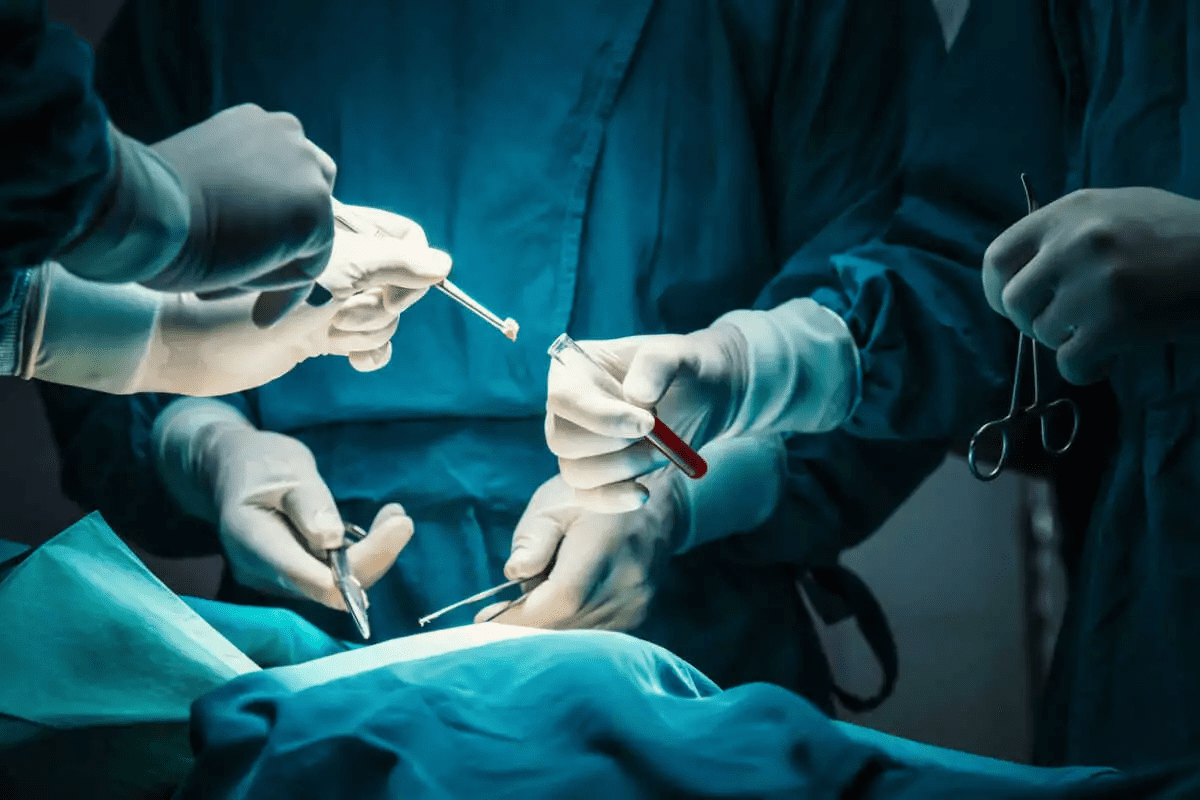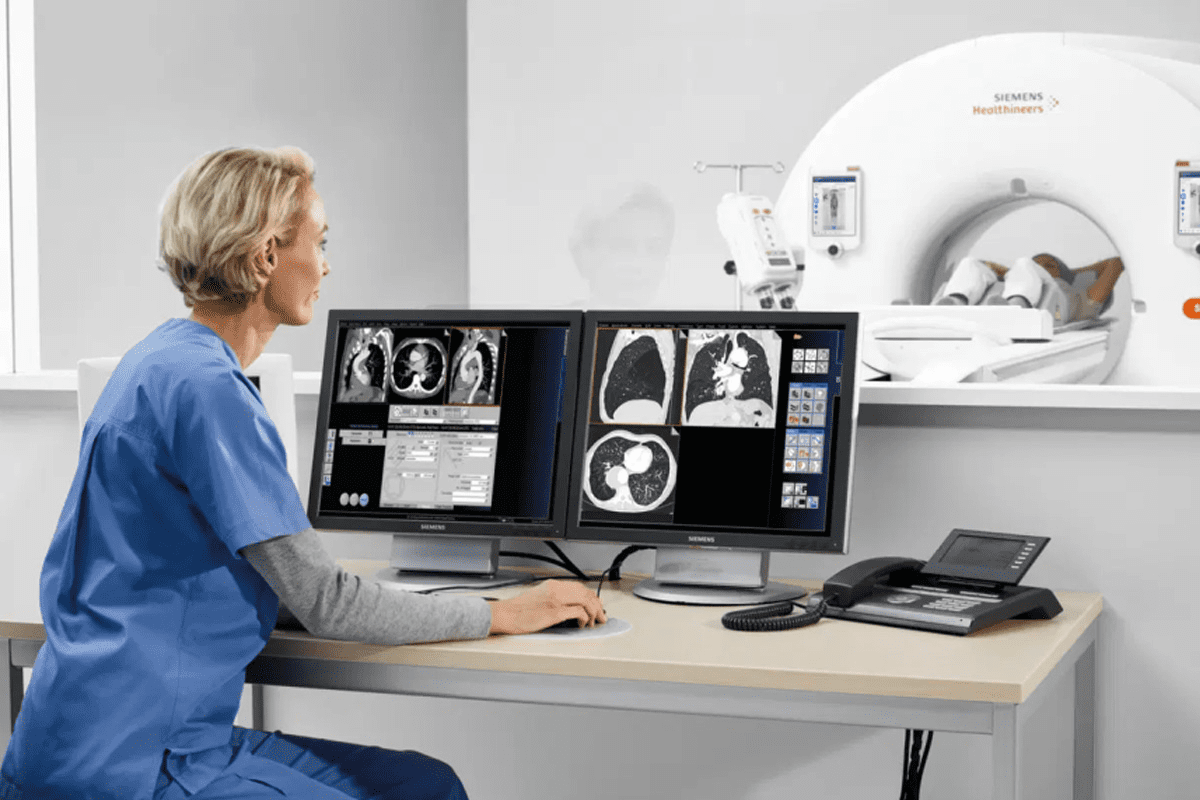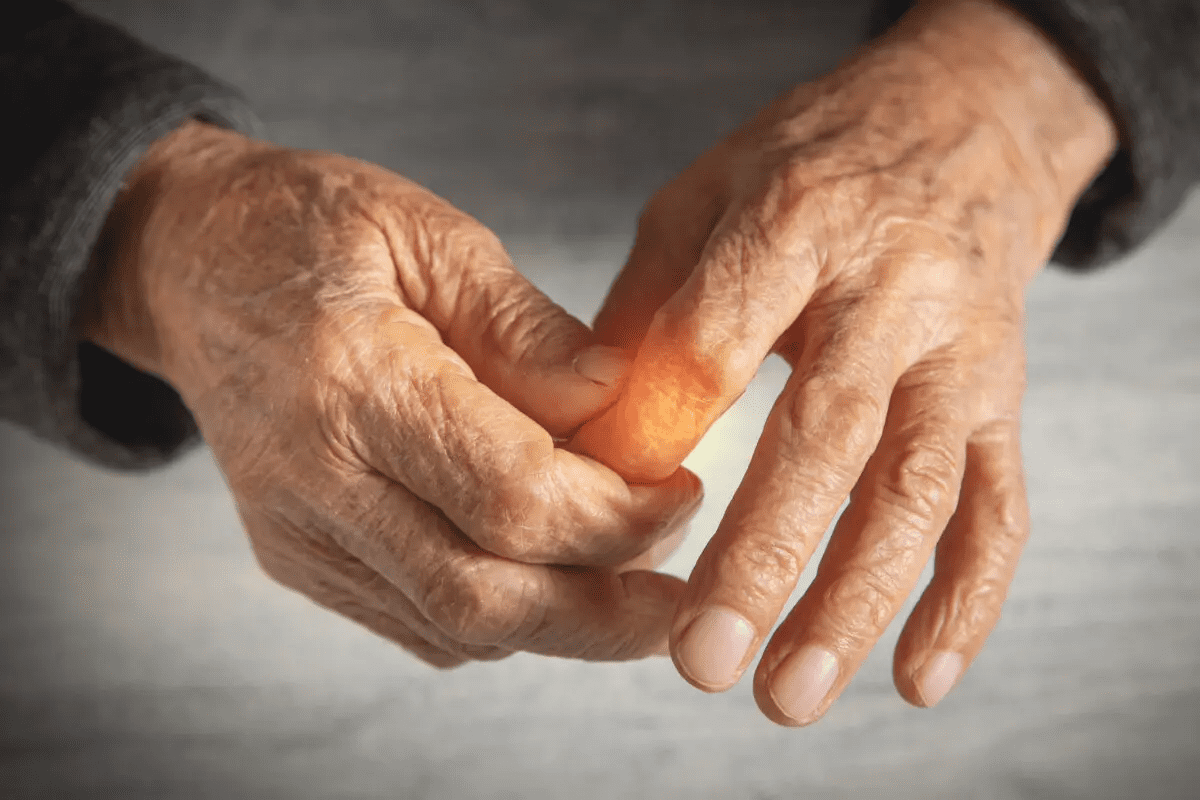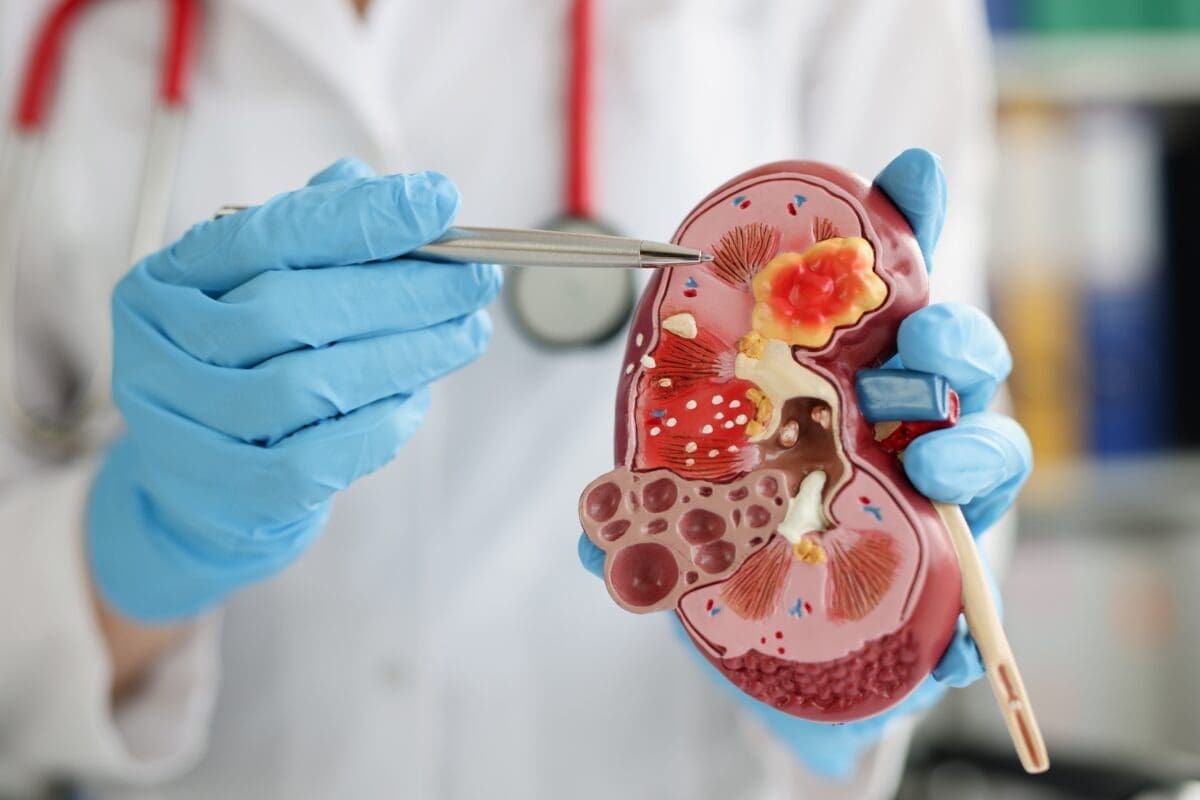Last Updated on November 27, 2025 by Bilal Hasdemir

Getting a bone scan can be scary, especially when it’s for cancer. At Liv Hospital, we help you understand what to expect and how long does a bone scan take.
A bone scan is a test that finds problems in the bones, such as cancer or other issues. The whole process usually takes 4 to 5 hours, which includes the waiting time after getting a special dye. The actual scan itself is much quicker, lasting 30 to 90 minutes.
Our team is here to guide and support you every step of the way, making sure you feel comfortable and informed throughout the procedure.
Key Takeaways
- A bone scan is a key tool for finding bone cancer and other bone problems.
- The test involves getting a special dye and waiting for it to show up in the bones.
- The scan itself is quick, taking 30 to 90 minutes.
- Getting ready is easy; you can eat and drink as usual.
- Experts look at the results to see if there are any bone issues.
Understanding Bone Scans in Nuclear Medicine

Nuclear medicine bone scans have changed how we find and track bone problems, like cancer. These scans are key in our toolkit, giving us info on bone health that other tests can’t.
What is a Nuclear Medicine Bone Scan?
A nuclear medicine bone scan is a detailed imaging test. It uses a tiny amount of radioactive material, called a radiotracer, injected into the blood. This material goes to the bones, showing where there’s unusual activity.
The scan uses a special camera to catch the radiation from the radiotracer. This creates clear images of the bones.
Getting ready for a bone scan is easy. Patients can eat and drink as usual, wear comfy clothes, and remove metal items. This makes bone scans a simple choice for patients.
Common Reasons for Ordering a Bone Scan
Doctors use bone scans for many reasons, like finding bone cancer and checking for bone infections. They’re also good for figuring out why bones hurt. Bone scans are great at spotting cancer because they show changes in bone activity.
How Bone Scans Differ from Other Imaging Tests
Bone scans are different from X-rays, CT scans, and MRI scans. While these tests show bone structure, bone scans look at bone activity. This is why bone scans are great for catching early signs of disease.
| Imaging Test | Primary Use | Key Benefit |
| Bone Scan | Detecting bone metabolism changes | High sensitivity for early disease detection |
| X-ray | Visualizing bone structure | Quick and widely available |
| CT Scan | Detailed bone and soft tissue imaging | High-resolution images |
| MRI | Soft tissue and bone marrow imaging | Excellent soft tissue contrast |
Bone scans are a key tool for finding and tracking cancer. They show where bones are acting strangely, helping spot cancer spread.
How Long Does a Bone Scan Take: Complete Timeline

Knowing how long a bone scan takes can help ease your worries. At our place, we aim to make the whole experience as easy and comfortable for you as we can.
Initial Preparation and Registration
The bone scan starts with getting ready and signing papers, which takes about 30 minutes. Our team will help you with all the paperwork and get you ready for the scan.
Radiotracer Injection Phase
Next, a special dye is injected into your blood, which takes about 15 minutes. This dye helps us see which parts of your bones are active during the scan.
Waiting Period
After the dye is injected, you’ll wait for 2 to 4 hours. This is when the dye builds up in your bones, making it easier to get clear images. You can relax or do light activities while you wait.
Actual Scanning Time
The scanning itself takes 30 to 90 minutes. Our top-notch imaging tech lets us get detailed pictures of your bones, helping us spot any problems.
| Procedure Stage | Time Taken |
| Initial Preparation and Registration | 30 minutes |
| Radiotracer Injection Phase | 15 minutes |
| Waiting Period | 2-4 hours |
| Actual Scanning Time | 30-90 minutes |
| Total Time | 3-5.5 hours |
The whole bone scan can take from 3 to 5.5 hours. We know it’s a long time, but we’re here to make it as comfortable for you as we can.
Preparing for Your Bone Scan
At Liv Hospital, we help our patients get ready for a bone scan. This ensures the best results. Preparing for a bone scan is easy. Just follow our steps for a smooth and successful test.
Dietary Guidelines Before the Procedure
We tell our patients to eat normally and drink plenty of water before the scan. You don’t need to fast or change your diet unless your doctor says so. Eating as you normally do helps get more accurate results.
Medication Considerations
Usually, you don’t need to stop your medications before the scan. But, your doctor might tell you to stop some. Tell your healthcare team about all your medicines, including vitamins and supplements. This helps them know if there could be any problems.
Clothing and Accessories Recommendations
Wear comfy, loose clothes to your appointment. Don’t wear metal jewelry or clothes with metal parts. It’s also good to wear easy-to-remove clothes. Wearing something comfortable can make you feel less anxious.
Special Instructions for Cancer Patients
Cancer patients get special advice for their bone scan. If you’re getting treatment, tell our team about it. This helps us make the scan work best for you and get the right information.
Key Takeaway: By following these tips, you can help make your bone scan a success. This gives your healthcare team the info they need to care for you. If you have questions or worries, just ask us. We’re here to help you every step of the way.
“A bone scan is a valuable diagnostic tool that can help detect cancer and other conditions. By understanding how to prepare, patients can contribute to the accuracy of the results.”
Liv Hospital Medical Team
The Bone Scan Procedure: Step by Step
The bone scan procedure has several key steps. It starts with assessing the patient and ends with the scanning. At Liv Hospital, we focus on making sure patients are comfortable and safe.
Initial Patient Assessment
First, our team assesses the patient. We look at their medical history and current health. This helps us tailor the procedure to their needs.
Radiotracer Administration
Next, we give the patient a radiotracer. This is a safe, radioactive substance that shows up on bone scans. It’s given through an arm injection.
What Happens During the Waiting Period
After the radiotracer is given, there’s a waiting period. This lets the substance spread in the bones. Patients can move around and usually leave the department.
The waiting time is between 2 to 4 hours. We tell patients to stay hydrated and comfortable.
Positioning and Scanning Process
When the waiting is over, patients return for the scan. They lie on a table, and the scan uses a gamma camera. This camera picks up the radiation from the radiotracer, showing the bones clearly.
The scanning takes 30 to 90 minutes. Patients must stay very quiet to get good images.
Our team works hard to make the bone scan as comfortable as possible. We know tests can be stressful. We aim to support and care for our patients.
Bone Scans for Cancer Detection
Bone scans are key in finding cancer, like metastases or primary bone cancer. At Liv Hospital, our experts use bone scans to spot abnormal bone activity. This helps us create treatment plans that work best for our patients.
How Bone Scans Identify Cancer Cells
Bone scans find cancer cells by seeing changes in bone activity. Cancer can make bones work more or less, which shows up on scans. “A bone scan is highly sensitive for detecting changes in bone metabolism associated with cancer,” making it a valuable tool in cancer diagnosis.
We inject a radioactive tracer into the patient’s blood. This tracer goes to active bones, which the scan can see. “Hot spots” or “cold spots” on the scan might mean cancer is there.
Primary Bone Cancer vs. Metastatic Bone Disease
Telling primary bone cancer from metastatic bone disease is key for treatment. Primary bone cancer starts in the bone, while metastatic bone disease comes from cancer spreading to the bone. Bone scans help us see how much and where the bone is affected.
Our team at Liv Hospital knows how to read bone scans to figure out the bone disease. This skill is important for making a treatment plan that fits the patient’s needs.
Sensitivity and Specificity in Cancer Detection
Bone scans are great at finding bone changes linked to cancer. But, they might not always point to cancer. Other issues, like fractures or infections, can also show up on scans.
To get a clear diagnosis, we use different tests and check-ups. By matching bone scan results with other findings, we can make sure our diagnosis is right. This helps us plan the best treatment.
Interpreting Bone Scan Results: Normal vs. Abnormal
Understanding bone scan results is key for treatment and managing bone diseases. At Liv Hospital, our skilled radiologists are essential in this process. They use their knowledge to spot normal and abnormal findings.
Characteristics of a Normal Bone Scan
A normal bone scan shows the radiotracer evenly spread across the skeleton. This means the bones are working as they should.
Understanding “Hot Spots” in Bone Scans
“Hot spots” on a bone scan mean areas with more radiotracer, showing active bone. These spots could mean cancer, infection, or a fracture. We look at the pattern, intensity, and location to figure out what’s causing them.
Identifying “Cold Spots” and Their Significance
“Cold spots” are areas with less radiotracer, possibly showing less bone activity or certain bone lesions. Though less common, they need careful checking to find the cause.
How Radiologists Differentiate Cancer from Other Conditions
Our radiologists look at several things when reading bone scans. They consider the tracer uptake pattern, patient history, and symptoms. This helps them tell cancer apart from other issues like degenerative changes or injuries.
Cancer usually shows specific patterns of increased uptake. Degenerative changes might look different, with more even uptake. By studying these patterns, we can make accurate diagnoses and plan the right treatment.
- Key factors in interpreting bone scans:
- Pattern and intensity of tracer uptake
- Patient’s clinical history and presentation
- Distribution and location of hot or cold spots
Reading bone scan results needs a deep understanding of bone health and disease. Our team combines technical skills with medical knowledge to offer top care for our patients.
Additional Diagnostic Tests Following Abnormal Bone Scans
When a bone scan shows something unusual, we need more tests to find out why. At Liv Hospital, we use a detailed plan to make sure we get the right diagnosis and treatment.
CT Scans and MRIs for Further Evaluation
If a bone scan shows something odd, we might suggest CT scans or MRIs. These tests give us a better look at the bones and the tissues around them. They help us figure out what’s causing the scan to look different.
- CT Scans: Good for spotting bone problems and seeing how they affect other parts.
- MRIs: Show us soft tissues, which helps us find issues in the bone marrow or nearby tissues.
Bone Biopsies: When They’re Necessary
Sometimes, we need a bone biopsy to check for cancer or other bone issues. This involves taking a piece of bone tissue for lab tests.
Blood Tests to Complement Imaging Results
Blood tests give us extra info that goes with what we see on scans. They can show signs of bone changes or other health issues.
Creating a Complete Diagnostic Picture
We use bone scans, CT scans, MRIs, bone biopsies, and blood tests together. This way, we get a full picture of what’s going on. It helps us make a treatment plan that fits the patient’s needs.
At Liv Hospital, our team works together to give patients the best care. We know an abnormal bone scan can worry you. So, we’re here to guide and support you every step of the way.
Potential Side Effects and Risks of Bone Scans
Bone scans are important for diagnosing health issues. But it’s key to know the possible side effects and risks. At Liv Hospital, we focus on keeping patients safe and taking all necessary precautions.
Radiation Exposure Concerns
Bone scans use a small amount of radiation from a radioactive tracer. The amount of radiation is low, similar to other imaging tests. We make sure the scan’s benefits are worth the risks. We follow strict guidelines to reduce radiation exposure.
| Imaging Test | Typical Radiation Exposure (mSv) |
| Bone Scan | 4-6 |
| CT Scan (Abdomen/Pelvis) | 10-20 |
| X-ray (Chest) | 0.1 |
Possible Reactions to Radioactive Tracers
The radiotracer in bone scans is usually safe. But, some people might have minor reactions. These can include allergic reactions or discomfort where the tracer was injected. We watch patients closely after the injection to handle any issues quickly.
Common reactions to radioactive tracers:
- Mild allergic reactions (rash, itching)
- Discomfort or pain at the injection site
- Nausea or dizziness
Special Considerations for Specific Patient Groups
Some groups need extra care with bone scans. Pregnant or breastfeeding women should talk to their doctor about risks and benefits. We also take special steps for patients with allergies or certain medical conditions to keep them safe.
At Liv Hospital, we aim to offer safe and effective diagnostic services. If you’re worried about bone scan side effects or risks, talk to your doctor.
What to Expect After Your Bone Scan
After your bone scan, you don’t need to rest. You can go back to your usual activities right away. At Liv Hospital, we make sure you know what to do next.
Recovery and Post-Procedure Care
You can start doing things as usual right after the scan. There’s no special care needed for the bone scan itself. Just follow any advice from your healthcare team about your health.
Timeline for Receiving Results
Your bone scan results will be ready in a few days. We’ll let you know as soon as they are. Then, we’ll talk about what to do next based on the results.
Follow-up Appointments and Next Steps
When your results are in, you’ll meet with your doctor. If the scan shows any issues, you might need more tests. Our team will help you through every step, including tests, treatments, or just support.
Emotional Support and Resources for Cancer Patients
Getting a bone scan can be tough, even more so if you’re worried about cancer. At Liv Hospital, we offer help and support. Our team is here to support you emotionally and guide you through this tough time.
Getting your bone scan results is a big part of your journey. We’re here to support you every step of the way. We want to make sure you get the care and help you need.
Conclusion
At Liv Hospital, we know how vital accurate and quick diagnosis is for cancer care. A bone scan is a key tool that gives us important insights into bone health. It helps spot any issues.
This scan usually takes a few hours. It uses nuclear medicine to find areas that might be a concern. Our team is here to help you every step of the way.
We aim to improve our services to give you the best care. Whether you’re getting a bone scan for cancer or need more tests, we’re here for you. Our experts will support you every step of the way.
FAQ
How long does a bone scan take?
The whole process takes about 4 to 5 hours. But the actual scan time is much shorter, from 30 to 90 minutes.
What is a bone scan used for in cancer diagnosis?
A bone scan helps find abnormal bone activity. This can show cancer or other bone issues. It helps doctors find where cancer has spread or if it’s in the bones.
How do I prepare for a bone scan?
Eat your usual food and drink water before the scan. Wear comfy, loose clothes. And avoid metal items.
What happens during the bone scan procedure?
First, you’ll get checked by a doctor. Then, a special dye is given to you. After a wait, you’ll be scanned with a gamma camera.
Can a bone scan detect cancer?
Yes, bone scans can find cancer. They show areas where bone activity is not normal. This means cancer might be there.
What are “hot spots” and “cold spots” in bone scans?
“Hot spots” mean bone activity is up. “Cold spots” mean it’s down. Both can show different health issues, like cancer.
Are there any side effects or risks associated with bone scans?
Bone scans are mostly safe. But, there’s a small risk of radiation and reactions to the dye. Some people might need extra care.
What happens after the bone scan?
After the scan, you can usually go back to normal activities. We tell you what to expect and when to get your results.
How are bone scan results interpreted?
Our radiologists look at the results. They find out what’s normal and what’s not. They can tell if it’s cancer or something else.
What additional tests may be ordered following an abnormal bone scan?
If the scan shows something odd, more tests might be needed. These could be CT scans, MRIs, bone biopsies, or blood tests. They help get a full picture of your health.
How long does it take to receive bone scan results?
How long it takes to get results varies. We’ll let you know when to expect them. And we’ll schedule any needed follow-up appointments.
References:
- Al-Bulushi, N. K., et al. (2016). Comparison of 18F-FDG PET/CT scan and 99mTc-MDP bone scan to detect bone metastases in head and neck cancer. Asian Pacific Journal of Cancer Prevention, 17(8), 3685-3690. https://pubmed.ncbi.nlm.nih.gov/26813992/
- Suppiah, S., et al. (2023). Bone SPECT/CT in diagnosing bone metastases: Utility and limitations. Seminars in Nuclear Medicine, 53(4), 472-485. https://www.ncbi.nlm.nih.gov/pmc/articles/PMC10348494/
- Mohseninia, N., et al. (2024). Bone metastasis in prostate cancer: Bone scan versus advanced imaging modalities. Critical Reviews in Oncology/Hematology, 180, 103702. https://www.sciencedirect.com/science/article/pii/S1040842823000570






